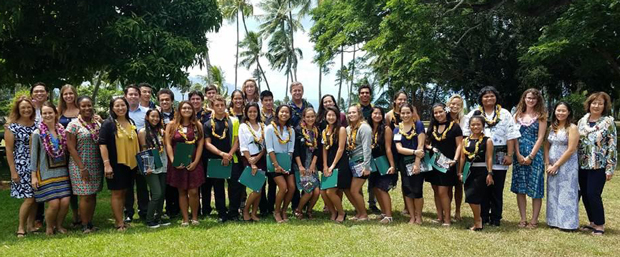

The Research Experiences in Marine Science (REMS) summer program, an advanced, inquiry-driven and experiential marine biology summer course hosted at the University of Hawaiʻi at Mānoa Hawaiʻi Institute of Marine Biology (HIMB), completed its fifth year. The course builds science and environmental literacy skills for Hawaiʻi high school students and recent graduates.
The 2017 cohort of 18 students completed the program and presented their team research projects to family, friends and other distinguished guests. Small groups of students worked with peer mentors and staff instructors to conduct original research related to how human impacts and global change affect coral reef ecosystems.
The goal of the program is to increase interest in marine science fields among students whose ethnicities are underrepresented in marine science majors at UH Mānoa. The program targets participation from students attending Hawaiʻi Public Title I schools with native Hawaiian, Filipino and other Pacific Islander backgrounds. The course is located at Moku o Loʻe (Coconut Island) in Kāneʻohe Bay and utilizes the expertise of HIMB and UH researchers, as well as agency and other partner organization experts. Topical content is taught over a two-week period, with appropriate emphasis placed on marine conservation, stewardship and sustainability. Student teams then conceptualize and execute a research plan over the following three weeks, working both in the field and in the lab at HIMB.
“The program provides students with a meaningful and rigorous introduction to marine biology and scientific research, as well as an improved understanding of the connection between coastal resources and the effects of human impacts and climate change on coral reef ecosystems,” said Malia Rivera, program director and HIMB faculty member. “Equally important, it builds valuable skills in science literacy and communication, team work, leadership and mentoring.”
Current Funders

- This past year, the Harold K.L. Castle Foundation donated funds to purchase a boat to take students to and from Coconut Island, and to take them to and from research sites around Kāneʻohe Bay.
- For the past two years, the Hau ʻoli Mau Loa Foundation has supported staff, travel costs, lab costs, college credit fees and other expenses for the program.
- For the past two years, the Pacific American Foundation has supported stipends for student participants through funding from a US Department of Education Native Hawaiian Education Program grant.
- This year, Carol Ann Hayashida donated funds to support the high school mentors (students who graduate the program the year before and are returning to help guide the new students in their experience).
- For the past two years, a Youth Access Grant from the Smithsonian Institution provided funds for creation of new lab modules and graduate student staff instructors.
- The NOAA Bay Watershed Education and Training grant provides funds for graduate student instructors.
—By Marcie Grabowski

